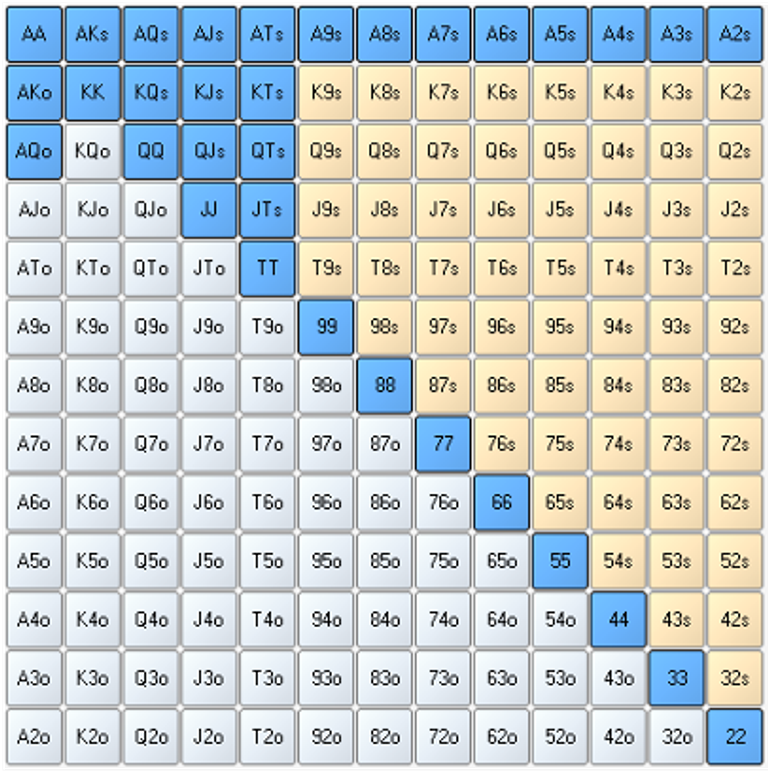New AI powered search!
Ask the BartBot
Looking for a specific poker concept? Search our 1,000+ videos and podcast episodes with the power of Al.
Why do we Bet in NL Hold'em?
In NL Hold'em betting isn't only about value, bluffing and equity protection.
Posted Jul 18, 2021
Contributor

Bart Hanson
Owner and Lead Pro
Professional Cash game trainer Bart Hanson has been producing strategy content for over fifteen years. He first started on Live at the Bike! back in 2005, then moved on to host "Cash Plays" on Poker Road, then "Deuce Plays" on Deuces Cracked and then to CrushLivePoker in 2012.
In his career as a professional poker player, Bart Hanson has:
-6 WSOP Final Tables
-Over 15 years of experience at the table
-Over $1,000,000 in tournament earnings
-Multiple appearances on ESPN and Poker Night in America
-4th place finish in 2019 WSOP Monster Stack
Getting used to thinking about betting in terms of equity will sharpen your understanding of range advantage, as well as how your hand’s equity holds up versus your opponents' range. @CrushLivePoker
Traditionally in poker the first step in deciding whether or not to place a bet is deciding the reason behind your bet. Are you bluffing in an attempt to make your opponent fold? Are you value betting trying to entice a call? Or are you betting to try and protect your hand from a scary runout? While this simplistic way of thinking is still a good launchpad for beginning players to learn, in today’s day and age betting strategies aren’t quite as black and white as they used to be. What once was a game of bluffing or value betting has evolved into a game of equity and ranges. Let’s dive in.
First, it’s important to understand that blanket terms like bluffing and value betting only apply on the river, after all the cards are out. Prior to the river, no matter what your hand is, it probably has some percentage of equity (unless you are drawing dead).
Let's take a look at a simple preflop example:
The UTG player raises with 5 ♠ 5 ♥, and you decide to 3-bet on the BTN with A ♦ K ♥. Are you 3-betting for value, or as a bluff?
Your opponent is technically the favorite preflop with a pair of fives, however your hand has better equity against his entire range of hands, dominating hands like AQ and AJ that he might also open preflop. However, you really can’t say if you are value betting or bluffing since we haven’t even seen the flop. Instead of 3-betting because you want to bluff or want to raise for value, you should 3-bet because you have an equity advantage versus his entire range.
Now let’s look at an exaggerated flop example:
The UTG player has 5 ♦ 5 ♥, and you have K ♠ Q ♠. The flop is J ♠ T ♠ 3 ♦. Do you have a bluffing hand or a value hand?
This is where things get a little tricky. If we were to showdown right now on the flop with no more cards to come, our opponent would win with a pair of fives. This means that by traditional standards our opponent has the made hand and we want to try and bluff him out of the pot with our draw. However, in this exaggerated example we are already way ahead of our opponent if we look at our hand in terms of equity to improve by the river. In this example K ♠ Q ♠ has 71% equity and our opponent’s 5 ♦ 5 ♥ has just 28%. So, are we value betting or are we bluffing when we bet?
You can hopefully see by now that by categorizing all of our bets as value bets or bluffs, we can’t really break down the situation accurately. What we should do is start thinking in terms of our hand’s equity versus our opponent’s range.
Let’s look at one final example:
You have K ♠ K ♥, and your opponent has a range of 22+,A2s+,KTs+,QTs+,JTs, AQo+ (pictured below).

The flop is A♣ T♠ 2♥. What do you think your hand’s equity is versus this range?
Even though our opponent has a ton of hands holding an ace in their range, we still have a slight equity advantage (53.68% versus our opponent’s 46.32%). This doesn’t necessarily tell us whether we should bet or check this board, but it does help us understand that we are still doing okay in terms of equity.
The way we think about poker is constantly evolving, and we have to be willing to adapt in order to maintain a positive win rate in today’s games. Getting used to thinking about betting in terms of equity will sharpen your understanding of range advantage, as well as how your hand’s equity holds up versus your opponents' range. You can start by using free tools like Equilab to breakdown hands and see how your holdings' equity stacks versus your opponents'. This will help you start to find potential leaks in your game and will help you gain a sharper understanding in your overall approach to No Limit cash games.